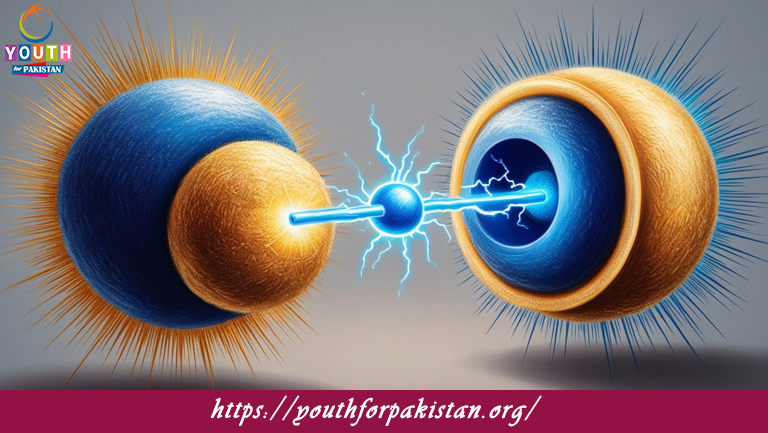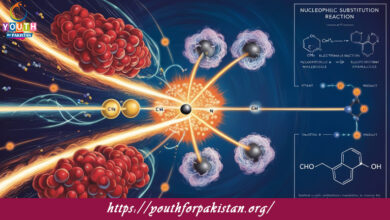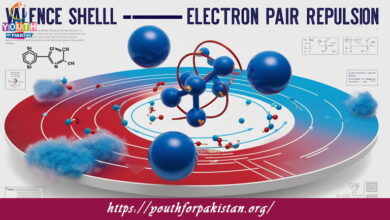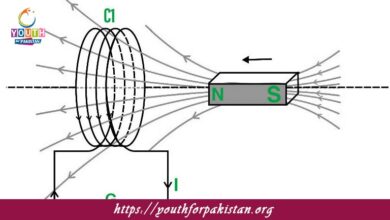Ionic Bond MDCAT MCQs with Answers

Welcome to the Ionic Bond MDCAT MCQs with Answers. In this post, we have shared Ionic Bond Multiple Choice Questions and Answers for PMC MDCAT 2024. Each question in MDCAT Chemistry offers a chance to enhance your knowledge regarding Ionic Bond MCQs in this MDCAT Online Test.
An ionic bond is formed when:
a) Electrons are shared between atoms
b) Electrons are transferred from one atom to another
c) Atoms form covalent bonds
d) Ions are attracted to each other by a magnetic force
Which of the following pairs of elements is most likely to form an ionic bond?
a) Sodium and chlorine
b) Carbon and hydrogen
c) Oxygen and nitrogen
d) Fluorine and fluorine
The characteristic of ionic compounds includes:
a) High melting and boiling points
b) Low electrical conductivity in solid state
c) Soft texture
d) Volatility
Which of the following compounds is an ionic compound?
a) Water (H₂O)
b) Methane (CH₄)
c) Sodium chloride (NaCl)
d) Carbon dioxide (CO₂)
Ionic bonds are generally formed between:
a) Two nonmetals
b) Two metals
c) A metal and a nonmetal
d) Two metalloids
The lattice energy of an ionic compound is:
a) The energy required to form ions
b) The energy released when ions form a crystal lattice
c) The energy required to break a covalent bond
d) The energy released when a covalent bond is formed
In an ionic bond, the metal atom typically:
a) Gains electrons
b) Loses electrons
c) Shares electrons
d) Forms covalent bonds
Which of the following has the greatest ionic character?
a) NaCl
b) MgO
c) HF
d) KBr
Ionic compounds are usually:
a) Insoluble in water
b) Poor conductors of electricity
c) Soluble in water
d) Volatile
The formation of NaCl from Na and Cl involves:
a) The transfer of electrons from sodium to chlorine
b) The sharing of electrons between sodium and chlorine
c) The transfer of protons from sodium to chlorine
d) The formation of a covalent bond between sodium and chlorine
The ionic bond in sodium chloride (NaCl) is formed between:
a) Sodium and potassium
b) Sodium and chlorine
c) Chlorine and fluorine
d) Magnesium and sulfur
Which property is typical of ionic bonds?
a) High electrical conductivity in the solid state
b) Low melting and boiling points
c) High melting and boiling points
d) Soft and malleable
The energy required to separate one mole of the ions of an ionic compound is called:
a) Bond energy
b) Lattice energy
c) Ionization energy
d) Electronegativity
Which of the following has a crystal lattice structure?
a) Liquid ammonia
b) Sodium chloride
c) Ethanol
d) Methane
In the formation of an ionic bond, the non-metal atom typically:
a) Gains electrons
b) Loses electrons
c) Shares electrons
d) Forms covalent bonds
The melting point of an ionic compound is generally:
a) Low
b) Moderate
c) High
d) Variable
Which of the following is a property of ionic compounds when dissolved in water?
a) They conduct electricity
b) They do not conduct electricity
c) They form gases
d) They form precipitates
The compound with an ionic bond that is used in table salt is:
a) Sodium chloride (NaCl)
b) Potassium iodide (KI)
c) Calcium carbonate (CaCO₃)
d) Magnesium sulfate (MgSO₄)
Ionic bonds are typically found in:
a) Molecular compounds
b) Covalent networks
c) Metallic substances
d) Salts
The bond formed between Na⁺ and Cl⁻ in NaCl is:
a) Covalent
b) Ionic
c) Metallic
d) Hydrogen
Which of the following compounds is an example of an ionic bond?
a) H₂O
b) NH₃
c) KCl
d) CO₂
In an ionic bond, the charges on the ions are:
a) Equal and opposite
b) Both positive
c) Both negative
d) Unrelated
The ionic bond in MgO is formed by:
a) The transfer of two electrons from magnesium to oxygen
b) The sharing of electrons between magnesium and oxygen
c) The transfer of one electron from magnesium to oxygen
d) The transfer of electrons from oxygen to magnesium
The ionic bond in calcium chloride (CaCl₂) is formed between:
a) Calcium and chlorine
b) Calcium and fluorine
c) Calcium and oxygen
d) Calcium and nitrogen
The ionic character of a bond increases with:
a) Increasing electronegativity difference between the bonded atoms
b) Decreasing electronegativity difference
c) Increasing atomic radius of the atoms
d) Decreasing atomic radius of the atoms
The solubility of ionic compounds in water is due to:
a) The high lattice energy
b) The low lattice energy
c) The polar nature of water molecules
d) The covalent nature of the bonds
The electrical conductivity of an ionic compound is highest in which state?
a) Solid
b) Liquid
c) Gas
d) Solution
The compound with the highest lattice energy is likely to be:
a) NaCl
b) KCl
c) MgO
d) LiF
Which of the following is NOT a characteristic of ionic compounds?
a) High melting point
b) Conductivity in molten state
c) Solubility in non-polar solvents
d) Hard and brittle nature
The ionic bond in LiBr is formed between:
a) Lithium and bromine
b) Lithium and chlorine
c) Bromine and chlorine
d) Lithium and fluorine
The charge on an ion in an ionic bond is determined by:
a) The number of electrons gained or lost
b) The bond length
c) The bond strength
d) The lattice energy
The property that distinguishes ionic compounds from covalent compounds is:
a) Solubility in water
b) Bond length
c) Bond strength
d) Melting point
The ionic bond in potassium iodide (KI) is formed between:
a) Potassium and iodine
b) Potassium and fluorine
c) Iodine and chlorine
d) Potassium and oxygen
The ionic bond in lithium fluoride (LiF) is formed by:
a) The transfer of one electron from lithium to fluorine
b) The sharing of electrons between lithium and fluorine
c) The transfer of two electrons from lithium to fluorine
d) The transfer of electrons from fluorine to lithium
Which of the following has the smallest ionic radius?
a) Na⁺
b) K⁺
c) Mg²⁺
d) Ca²⁺
The most ionic compound among the following is:
a) NaF
b) NaCl
c) NaBr
d) NaI
Which of the following is true for ionic compounds in the solid state?
a) They conduct electricity
b) They are typically soft
c) They form crystals
d) They are generally volatile
The lattice energy of an ionic compound is affected by:
a) The size of the ions
b) The shape of the ions
c) The color of the ions
d) The mass of the ions
Which of the following compounds will have the highest lattice energy?
a) NaCl
b) MgCl₂
c) KCl
d) LiCl
The lattice energy of an ionic compound is directly related to:
a) The charge of the ions
b) The covalent character of the bond
c) The bond length
d) The molecular weight
If you are interested to enhance your knowledge regarding Physics, Chemistry, Computer, and Biology please click on the link of each category, you will be redirected to dedicated website for each category.





